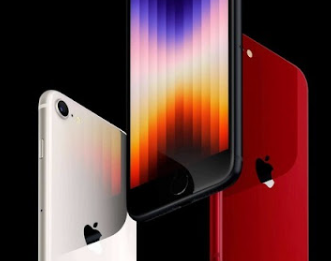Can you imagine that unsold iPhones are incredibly cheap now! Check below and discover more.
The smartphone market has witnessed seismic shifts, with Apple at the helm as a dominant force. Yet, amidst record-breaking sales and groundbreaking technology, an unsavory truth emerges: a surplus of unsold iPhones. These devices symbolize not just corporate hurdles but also consumer preference shifts, market saturation, and the smartphone industry’s trajectory. This piece probes the causes of this surplus and the consequences it holds, examining supply chain snags, consumer demand, technological innovation, pricing tactics, and purchasing patterns to paint a vivid picture of this often-overlooked tech market segment.
Market Dynamics Unveiled
In the fast-paced smartphone industry, innovation is the name of the game. Apple, a titan, has witnessed sales spikes, but not without setbacks. The interplay between high demand and market glut can swing wildly. A surplus of unsold iPhones stems from overproduction to meet initial fervor, which, when unmatched by sustained consumer interest, leads to stock overflow. Additionally, evolving consumer tastes, shaped by feature trends, pricing, and smartphone capabilities, can overshadow newer models, making them obsolete in the consumer’s eye. The intensifying competition, with rivals offering similar features at lower prices, can ripple through Apple’s market share, resulting in an unsold device backlog. Thus, market dynamics are pivotal in understanding the prevalence of unsold iPhones.
Supply Chain and Production Complexities
The intricate production landscape of iPhones involves global supply chains and numerous manufacturers. Disruptions in this network can affect inventory levels. Component shortages can derail production schedules, leading to demand miscalculations. Production efficiency and geopolitical tensions can further complicate manufacturing. Apple’s global outreach adds layers of complexity, as regional preferences vary. Overproduction predictions can lead to a supply-demand imbalance and devices accumulating in storage. Apple’s investment in automation and advanced tech aims to streamline production, but overreliance can compromise quality control, affecting sales and contributing to unsold stock.
Pricing Strategies and Consumer Reactions
The pricing of iPhones has always been a contentious issue. Apple’s premium brand positioning is reflected in its pricing, but this strategy can backfire in a market with budget options. When new iPhone models launch, older ones are discounted, leading to consumer hesitation, especially price-sensitive buyers. This dynamic can result in a backlog of devices with slower turnover rates. Conversely, aggressive retailer discounts can create perceptions of rapid depreciation, influencing consumers to delay purchases or seek alternatives. These reactions highlight the delicate balance Apple must maintain with its pricing to avoid inventory buildup.
Consumer Behavior and Influence
Delving into consumer behavior is key to understanding the buildup of unsold iPhones. In a choice-saturated world, customers often delay purchases. Shifting preferences toward sustainability and longer smartphone lifecycles have led to fewer upgrades, impacting high-end iPhone sales. Advances in software that maintain device performance over time reduce the urgency for new model purchases. This behavioral shift can significantly affect inventory levels, especially if there’s a surplus of previous models. Social media’s influence further shapes consumer opinions, with negative reviews or controversies swaying potential buyers, affecting sales landscapes.
Environmental Implications of Unsold Inventory
The unsold iPhone surplus transcends business concerns, posing environmental challenges. As Apple aims for environmental responsibility, excess inventory contradicts resource conservation efforts. The electronics industry, including unsold iPhones, contributes to environmental degradation and waste. Apple’s recycling initiatives and carbon footprint reduction efforts are at odds with excess inventory challenges. Moreover, the economic aspect of resources tied up in unsold inventory could be better allocated to sustainable innovations, impacting the company’s ability to invest in green technologies and practices.
As the smartphone landscape evolves, the implications of unsold iPhones demand comprehensive attention. Insights into market dynamics, production issues, consumer behavior, and environmental impacts reveal the complexity of this situation. The surplus of inventory presents challenges but also prompts a reevaluation of strategies by Apple and other manufacturers in this competitive industry. For a sustainable future, it’s crucial for brands to refine their practices, understand consumer desires, and adopt sustainable production methods. Apple’s legacy may well depend on its adaptability to these market realities, ensuring unsold inventory does not overshadow its innovations.




